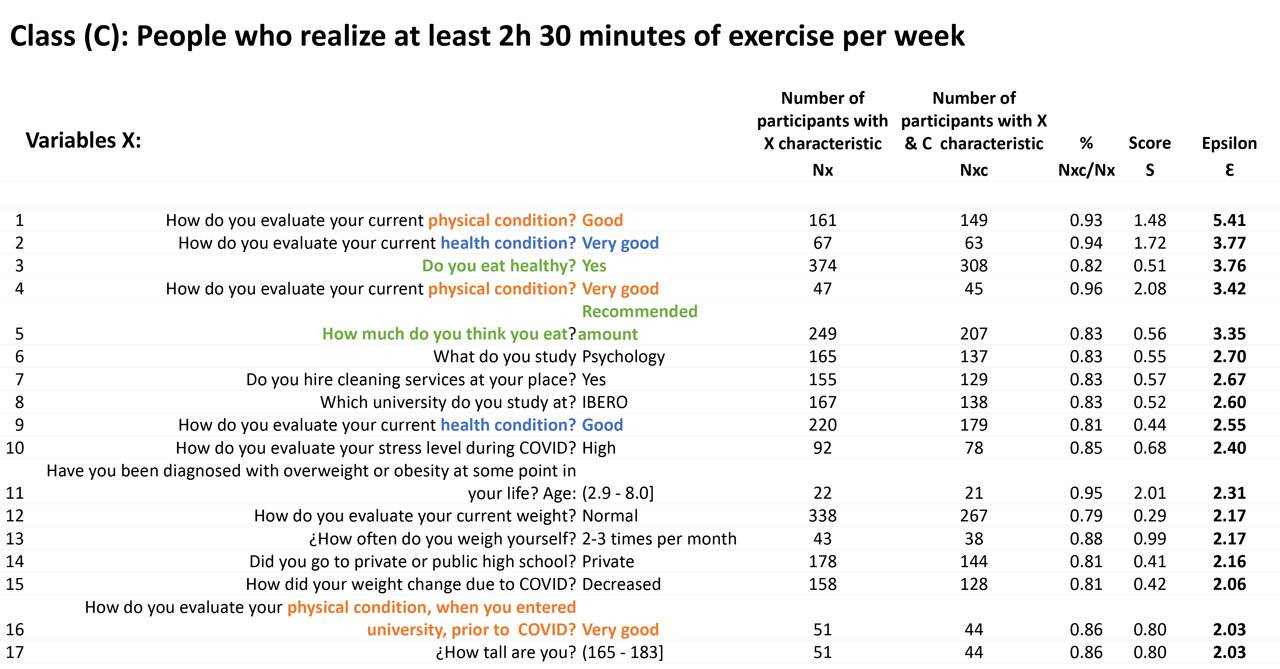Conductome
Use cases
The current Conductome platform is based on a Bayesian classifier approach that calculates the conditional posterior probabilities P(C(t) | X(t’)), for classes of interest (C) given a set of predictors X(t’) = ( X1(t’), X2(t’),…, XN(t’)).
Examples of classes of interest:
- people with obesity
- people who exercise
- people who eat the recommended number of calories
Examples of predictors for the classes:
- socio-demographic, e.g. age, education
- economic, e.g. income
- psychological, e.g. stress
- physical activity, e.g. hours of walking per day
- eating behavior, e.g. servings of vegetables eaten per day
The variables can be divided into those that refer to state (e.g. perceived stress) and conduct (e.g. eating healthy).
All data types and variables, Xi, can be converted into binomial variables by a suitable discretisation (“coarse graining”).
The classifiers P(C(t)|X(t’)) can be interpreted as describing the “niche” of a class of interest, where the variable configuration, X, describes the niche of C in the case where P(C|X) > P(C) and “anti-niche” on the contrary, where P(C|X) < P(C). To read more about theoretical framework go to Theoretical Framework.
A set of X variables can represent a spectrum of factors.
Example:
- Class: People who do at least 2h 30 minutes of exercise per week
- Factors:
- Physical condition
- Health condition
- Eating healthy
- Portion size
- Height
- Diagnosis of obesity, etc.
Conditional probability, score, and epsilon are calculated for each variable given a specific answer, for example, the probability that a person performs at least 2h 30 minutes of exercise given that he/she currently considers his/her physical condition “good” (i.e., the person answered ”Good” to the item “How do you evaluate your current physical condition?”).
By adding the scores for each variable, a total score is obtained for each person to predict their probability of exercising at least 2 hours and 30 minutes per week.
